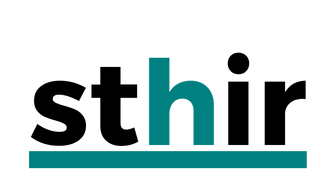Reshaping Inclusion: How CHROs Are Driving Neurodiversity and Broader Equity Initiatives

Chief Human Resources Officers (CHROs) are playing a central role in evolving inclusion strategies to reflect the changing needs of today’s workforce. As organisations grapple with growing demands for psychological safety, diverse talent retention, and innovation, CHROs are embedding inclusive thinking into systems, leadership development, and daily work practices. Across geographies, this shift is particularly visible in efforts to support neurodivergent individuals- those who think and process information differently, including people with ADHD, autism, dyslexia, and other neurological variations.
Global Momentum for Neuro-Inclusive Practices
Globally, organisations such as Microsoft, SAP, JPMorgan Chase, and EY are expanding inclusion beyond traditional dimensions like gender and ethnicity to consider neurodiversity as a strategic imperative. The World Economic Forum reports that these companies are redesigning executive pipelines, onboarding frameworks, and physical work environments to accommodate cognitive differences. This includes providing quiet spaces, allowing flexible communication preferences, and incorporating structured workflows to support focus.
CHROs are guiding the integration of neurodiversity programs into core HR systems. For instance, at Wells Fargo, HR leaders developed alternative hiring pathways tailored to neurodivergent candidates. These include task-based assessments in place of traditional interviews and onboarding support via trained neuro-inclusion advocates. Julie Kratz, writing in Forbes, describes these steps as part of a broader effort to build allyship into HR leadership practices.
At Deloitte, internal research highlighted that neurodivergent teams—when supported effectively—often outperform in roles requiring pattern recognition, memory, or attention to detail. As a result, the firm published joint guidance with The Wall Street Journal for creating neuroinclusive cultures, emphasising leader-led coaching, clear feedback loops, and assistive technology adoption.
Indian CHROs Driving Inclusive Culture from the Top
In India, several CHROs are adapting these approaches to the local context while addressing systemic gaps in access, awareness, and disclosure. Companies such as SAP Labs India, Accenture, EY, and Publicis Sapient have launched targeted hiring programs and employee resource groups (ERGs) focused on neurodiversity. These efforts reflect a shift from compliance-driven diversity to proactive inclusion aligned with business goals.
Kantar’s CHRO, in a March 2025 interview with ETHRWorld SEA, explained how the company’s inclusion strategy extends to neurodivergent employees through process redesign and leader enablement. Training managers to recognise workstyle diversity, offering accommodations without requiring disclosure, and reducing sensory overload in workspaces are core elements of this approach.
Rajita Singh, CHRO at Kyndryl India, shared in SightsInPlus how the company’s inclusion efforts are rooted in leadership accountability. Kyndryl applies reverse mentoring, internal DEI scorecards, and employee storytelling to surface less visible forms of diversity. Singh emphasised that initiatives such as inclusive language guidelines and neurodiversity learning modules have been well-received across functions.
Marico’s CHRO, Amit Prakash, detailed in a SightsInPlus feature how the organisation has implemented the WINGS program to support employees with disabilities, including neurodivergent individuals. Their strategy integrates disability inclusion into leadership KPIs and focuses on equitable infrastructure, flexible policies, and employee-led advocacy.
Mindspace Business Parks’ CHRO, Urvi Aradhya, outlined in People Matters the use of inclusive hiring panels, dedicated return ship programs, and physical infrastructure audits to improve accessibility across business parks. These initiatives aim to reflect the diversity of India’s urban talent pool, which includes many individuals with cognitive and sensory needs.
From Programs to Culture
CHROs are increasingly moving from standalone programs to systemic inclusion strategies. This includes embedding neurodiversity awareness into leadership development, using data to track equity outcomes, and equipping people managers with practical tools to support diverse team dynamics.
India’s Economic Times profiled organisations implementing internal assessments, anonymous self-identification mechanisms, and peer education sessions to reduce stigma around neurodivergence. In these environments, disclosure becomes safer because accommodations are not conditional on diagnosis but built into flexible work models.
Additionally, CHROs are leveraging partnerships with external experts to refine practices. Accenture and SAP, for example, collaborate with neurodiversity consultancies to co-design job roles and onboarding processes. This ensures that inclusion is not aspirational but operationally grounded.
Looking Ahead
As workforce expectations evolve, CHROs are playing a pivotal role in shaping inclusive practices that go beyond visible traits. By focusing on how people work HR leaders are helping create environments where cognitive diversity contributes to innovation, problem-solving, and employee well-being.
The examples emerging from both global corporations and Indian enterprises indicate a strategic commitment to reshaping inclusion. For many CHROs, this shift marks a redefinition of leadership itself: responsive, informed, and inclusive by design.
Reference List
- 1. Celebrating differences, fostering growth: Mindspace Business Parks’ CHRO shares their DEI strategy. (n.d.). People Matters. Retrieved from https://mindspacebusinessparksprivatelimited.com/newsroom/celebrating-differences-fostering-growth-mindspace-business-parks-chro-shares-their-dei-strategy
- 2. Don’t wait for change to happen, lead it: Kantar’s CHRO on fostering inclusivity and driving organisational change. (2025, March). ETHRWorld SEA. Retrieved from https://hrsea.economictimes.indiatimes.com/news/workplace/dont-wait-for-change-to-happen-lead-it-kantars-chro-on-fostering-inclusivity-and-driving-organisational-change/118833942
- 3. India Inc embracing neurodiversity at workplace. (2024, April). The Economic Times. Retrieved from https://economictimes.indiatimes.com/india-inc-embraces-neurodiversity-at-office/articleshow/109275299.cms
- 4. India’s Top CHROs Redefining HR’s Strategic Role. (n.d.). RethinkHR. Retrieved from https://rethinkhr.co.in/indias-top-chros-redefining-hrs-strategic-role
- 5. Marico CHRO, Amit Prakash champions inclusion on Disability Day. (2025, May). SightsIn Plus. Retrieved from https://sightsinplus.com/interview/chro/marico-chro-amit-prakash-champions-inclusion-on-disability-day
- 6. Rajita Singh on how Kyndryl India champions DE&I & equal access. (n.d.). SightsIn Plus. Retrieved from https://sightsinplus.com/interview/chro/rajita-singh-on-how-kyndryl-india-champions-dei-equal-access
- 7. 5 Neuro inclusion best practices to lead like an ally. (2024, June). Forbes. Retrieved from https://www.forbes.com/sites/juliekratz/2024/06/05/5-neuro-inclusion-best-practices-to-lead-like-an-ally
- 8. Building a neuro inclusive workplace. (2024, June). Deloitte / The Wall Street Journal. Retrieved from https://deloitte.wsj.com/sustainable-business/building-a-neuroinclusive-workplace-c23e4aea
- 9. How to create a neurodiversity-inclusive executive team. (2023, August). World Economic Forum. Retrieved from https://www.weforum.org/agenda/2023/08/neurodiversity-how-to-create-inclusive-leadership-team
Services
Sthir India
16, Mahavir Centre, Sector 17, Vashi, Navi Mumbai, Maharashtra 400703
Interested in working with us?

